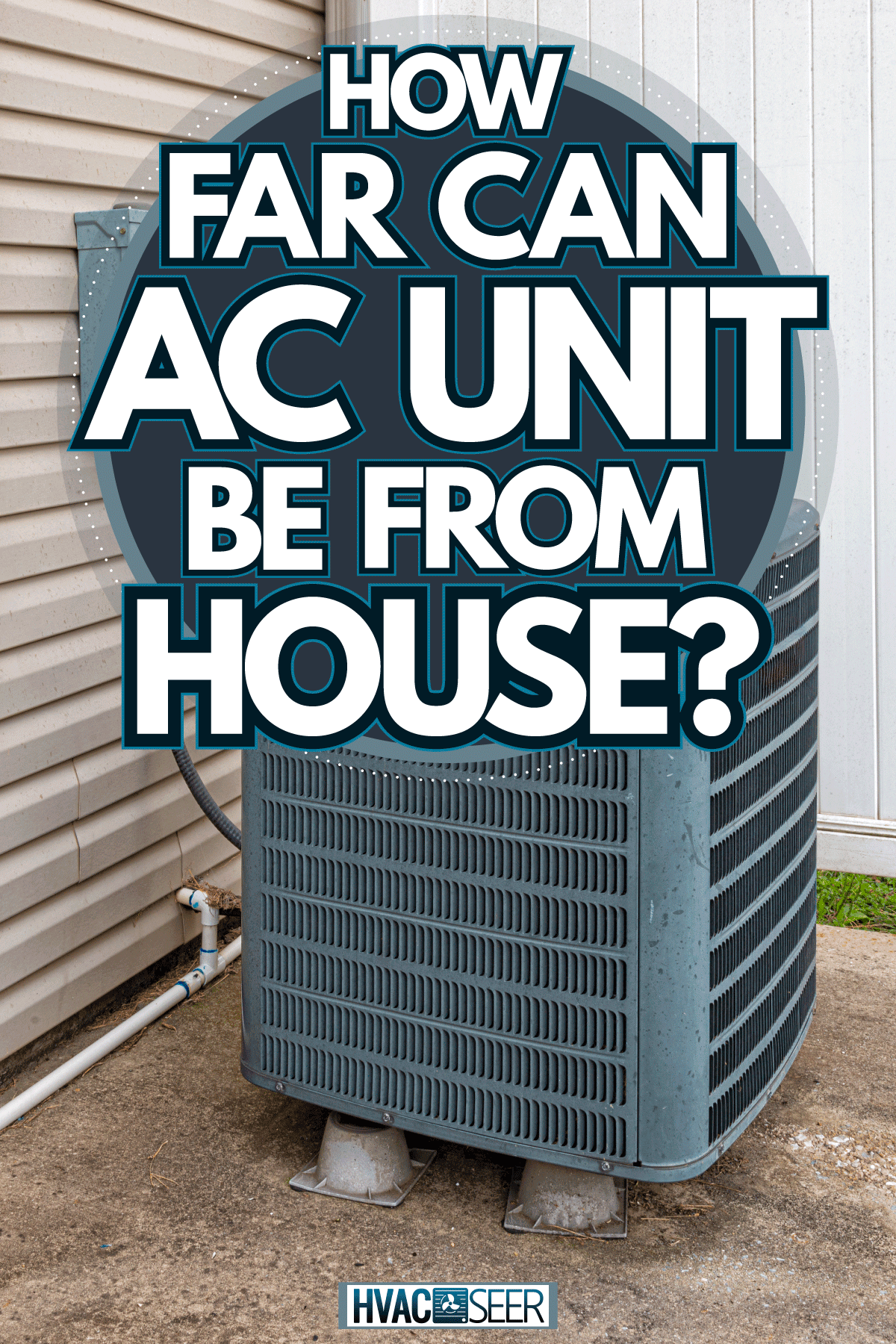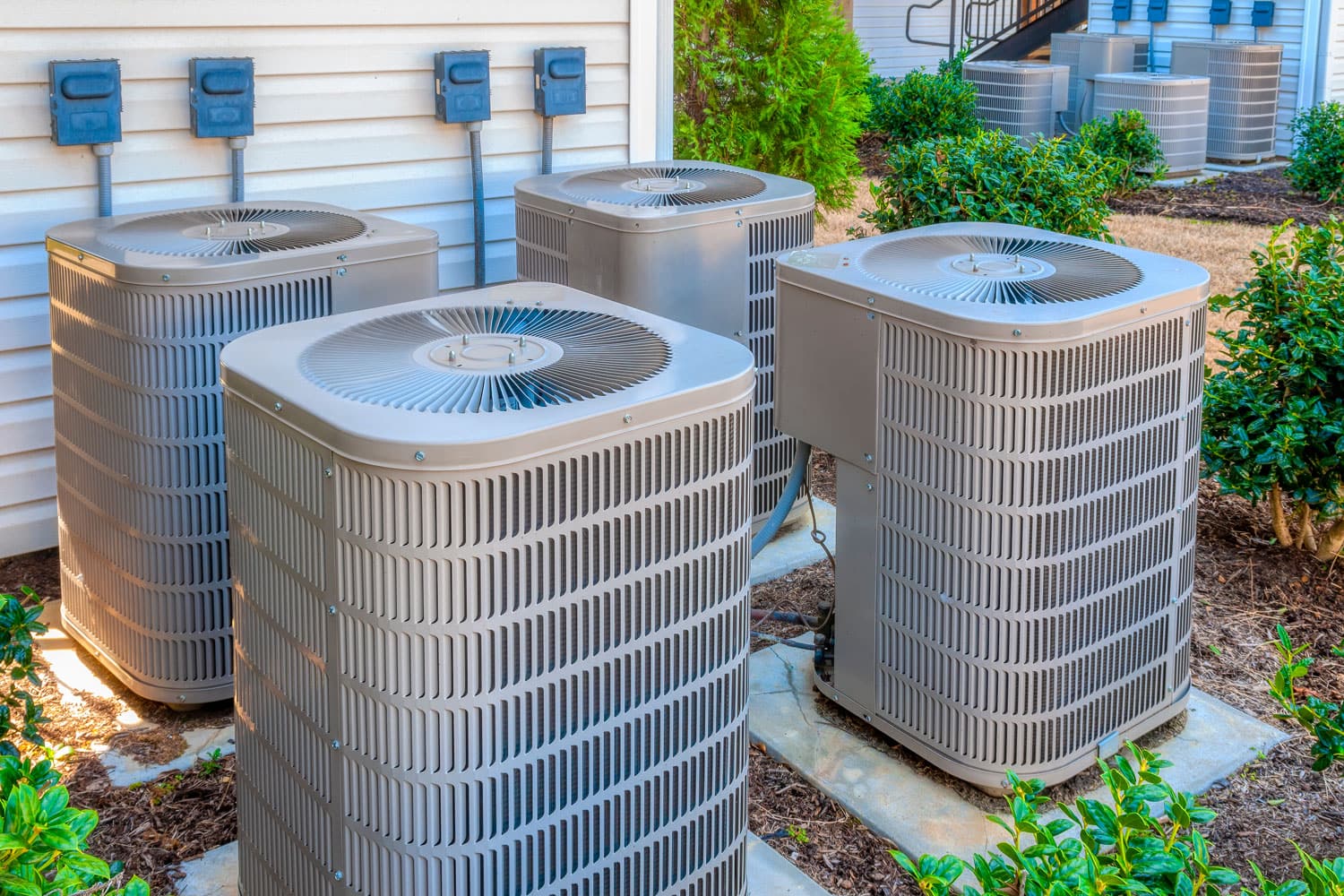Are you planning to install a new AC unit, and you're wondering how far away from the house you can have it? Or perhaps you're doing a remodel of your home, and you need to move the outdoor air conditioning unit and wonder how far you can install it from the house? Wonder no more, for we researched this issue and have the answer. Let's dive in!
In general, you want the line sets or the refrigerant lines to be less than 50 feet away from a house. Doing this will allow your air conditioning system to have the best performance.
Why stop at knowing the farthest that an AC unit can be installed? Isn't it equally important to understand both the farthest and the closest distance an AC unit can be installed outside your house? Find out more about installation clearances in the sections below. Let's dive in!

What Is The Ideal Distance For Installing An Outdoor AC Unit?
Each air conditioner model has its recommended maximum and minimum installation distance from the house. Additionally, some manufacturers tie these distances to the warranty of their product.
These guidelines may include equipment that the unit might need to maintain consistent pressure and performance. Before installing your outdoor unit as far away from your house as possible, keep in mind that a longer line set also means a higher cost of installation and usage.
Furthermore, the extra installation cost will come from the additional equipment. You will need to purchase and install it professionally. Moreover, longer line sets mean that your AC unit will need more refrigerant to fill the space that the longer lines will create.
The installation guide from your manufacturer also specifies maximum vertical flow. Keep in mind that upward fluid movement adds more work for your AC unit, which equals more energy consumed by your AC. This means higher energy bills.

The Importance Of Following Recommended Distances For Installing Outdoor Units Of Split Air Conditioners
Generally, an air conditioner is dependent on unhindered airflow to function efficiently. It doesn't matter if you have a portable, window-type, or split air conditioner; they all need proper airflow.
Without unrestricted airflow, they will not achieve their maximum rated output.
An air conditioning unit you install close to an object that can obstruct airflow will cause it to work less efficiently. It will not provide the cooling that you need, and the air conditioner will consume more electricity to function.
Furthermore, an air conditioner with restricted airflow will not be able to expel the heat that it produces and removes from your home. This will reduce the effective lifespan of your air conditioner.
The recommended spacing or recommended distances ensure that your air conditioner would have unobstructed airflow to function correctly.
How To Determine The Right Clearance For An Outdoor AC Unit

It's not unusual for manufacturers to have different recommendations regarding the clearance distance of the outdoor unit of their air conditioners. Thus, it is best to check the installation manual with the AC you bought and follow the instructions.
You should follow any recommended distances there strictly.
However, there are rare situations when there is no recommended minimum distance in the installation manual; or maybe your unit did not come with an installation manual. If your unit did not come with a manufacturer's installation manual, check with their support team first to get a copy.
This will also help you verify if there is no installation manual or whether your unit lost its copy during shipping.
Additionally, if your unit does not have an installation manual or the installation manual that came with it does not include a recommended minimum installation distance, it is time to follow the rule of thumb.
Clearance Requirements For An Outdoor AC Near A Constructional Obstruction
A constructional obstruction refers to structures similar to the parts of the house or the surrounding fence. These obstructions include walls, fences, posts, etc.
The rule of thumb is to maintain a distance of at least two feet away from any constructional obstructions when installing an outdoor AC unit.
Outdoor units can be installed within the same distance to a window or a door. However, keep in mind that continuous hours of operation can cause the AC exhaust to affect the air quality and temperature in the room adjacent to the window or door.
Clearance Requirements For An Outdoor AC Near A Landscaping Obstruction
Landscape obstructions are greenery like shrubs, trees, potted plants, and long blade grass. One common mistake is to install the outdoor unit close to a landscaping obstruction to neutralize the look of the outdoor unit. Some installers think it is ok since plants allow airflow anyway.
This is not an ideal practice.
Landscaping obstructions can restrict airflow (leaves can get into vents and block them) and affect the performance of outdoor AC units.
The outdoor AC unit should maintain a distance of two feet from any landscaping obstruction. Check landscaping obstructions regularly for outgrowths that disrupt the space of two feet and trim them as needed.
Clearance Requirements For An Outdoor AC Near A Mechanical Obstruction
Mechanical obstructions include kitchen exhaust vents, vents for heating appliances, vents for clothes dryers, etc. These are equipment that has their vents or generates their exhaust. These areas also represent an obstruction to the proper functioning of your outdoor air conditioning unit.
Air-conditioner installers treat these obstructions the same way they treat typical walls. While they may be part of a wall, they aren't the same thing.
These obstructions generate exhaust gases or air that can directly affect the airflow of your AC. Additionally, gas vents and oil tank fill valves become dangerous fire hazards if your outdoor AC unit is too close to them.
Ultimately, the outdoor AC unit must be installed within 4-8 feet away from any mechanical obstruction like the ones mentioned above.
If possible, it is even recommended to install the outdoor AC unit in a different location entirely.
What Is The Clearance Requirement Between Two Outdoor Air Conditioners?

Some homes use two or more air conditioning units: one unit to manage the temperature of each floor of the house. The outdoor units of these air conditioners should be installed at a specific distance from each other so that they will not compete for airflow, which will cause airflow restrictions to all units.
There is a good reason why air conditioner units exhaust gases, so it is not suitable for an AC unit to take in the exhaust gas. Once this happens, this can severely affect the performance of your air conditioning system.
When installing two or more outdoor AC units, it is recommended to keep a minimum distance of four feet between them.
Is There A Recommended Vertical Clearance For Installing Outdoor Air Conditioners?
Your unit has a minimum recommended vertical clearance to function correctly and maintain its efficiency like horizontal clearance.
Outdoor units should have a vertical clearance of at least 60 inches from the top of the unit. This clearance ensures that the unit will not be sucking in the same warm air and exhaust gases it releases.
To Wrap Up

Outdoor AC units have different recommended distances per manufacturer and model. You can typically find these requirements in the manufacturer's installation guide your AC comes with.
However, without an installation guide, follow the rule of thumb to know the ideal distance from various obstacles where your outdoor AC unit should be installed.
Made it to the end? Check out these helpful related posts below!
What Air Conditioners Work With Coolbot? [And How To Install One]
How Long Does A Portable Air Conditioner Take To Cool A Room?
